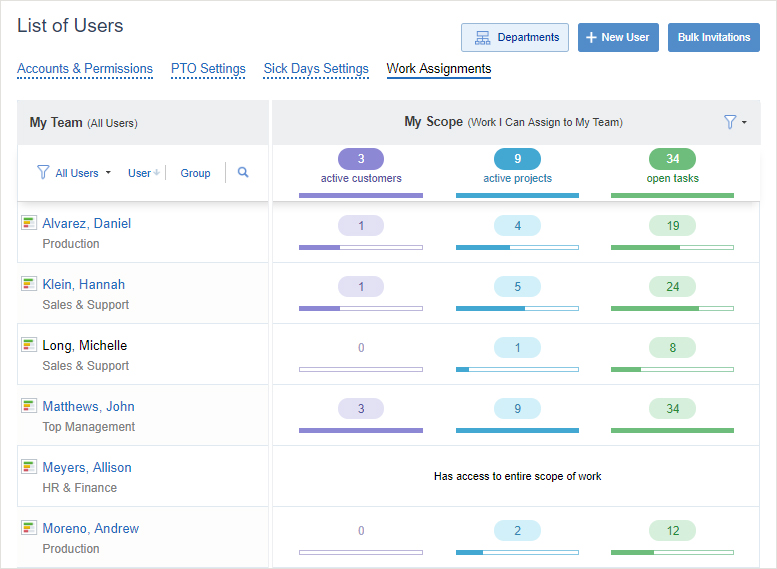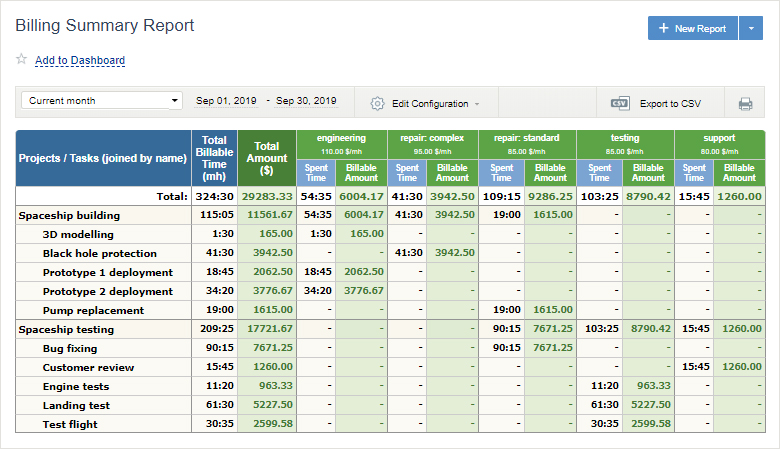
Defining the scope of work is crucial for completing a project. Clearly defined scope ensures exact delivery timelines, prevents scope creep and allows to achieve planned results. It also simplifies collaboration and provides the team with a transparent vision of the big picture.
But, as important as it is, work scope is often defined too vaguely. The result is work bloat, frequent and radical changes, and delivery delays – not to mention possible conflicts among stakeholders: unclear scope doesn’t reflect their visions and therefore invites misunderstanding. That’s why it is critical to define the scope of work clearly. But first, what is the work scope?
Work Scope Definition
Scope of work is a document that contains the work that you and your team are going to perform on the project: project timeline, deliverables, milestones, reports, work details and end product that is expected from the performing party. The primary purpose of the work scope document is to establish an equal vision regarding the project so that there’s no confusion between the stakeholders and the project team.
A survey taken by Project Management Institute revealed that 52% of projects experienced changes to the project scope in the past 12 months, which proves the importance of establishing a clear-cut scope of work.
Let’s see in more detail why defining an accurate project scope poses a significant problem.
Why Is It Difficult To Define Clear Work Scope?
Why does the problem of too vague work scope definition exist? There are various reasons, most of which boil down to poor project management. Let’s go through the main tricky areas that cause unclearly defined work scope and result in new issues emerging in the course of a project.
- Poorly identified needs of the stakeholders. At the beginning of the work planning step, it can be not clear enough who key stakeholders are and what are their primary needs. Everything that falls into the “might be necessary” category gets included in the work scope, and the result is an unclear and bloated scope.
- Poor prioritization. Lack of a thoughtful approach is not uncommon in chaotic and hectic environments – and it results in undefined priorities and scope bloat.
- Inability to say no. Sometimes, clients and stakeholders insist on their preferences. Lack of authority to say no, or the project manager’s inability to do so results in additions to work scope and blurring of scope outlines.
The common problem that adds to the scope definition difficulties is the tendency to describe the projects and project requirements in high-level terms. At the initial phases, the amount of work to be done is not entirely clear, and there’s a not negligible chance that important things can be missed. Priorities are not defined, and it’s hard to structure the work process. So what project managers can do to achieve a clear project scope?
First Steps Towards Clearer Work Scope
While every project has its scope and factors that define it, there are some common steps that help managers clarify project work, its priorities and expected results. Here’s what you can do as a project manager to reduce project scope uncertainty at early stages.
- Identify stakeholders and their visions. Contact key stakeholders to learn more about their requirements and expectations. Involve them in the planning process, and use their input to define a clear scope of work.
- Define product requirements. Start with the key requirements to the end product. Find out what client’s and stakeholders’ needs and priorities are, and involve them in the prioritization process.
- Define what will and will not be done. The second part – what won’t be performed within project work – tends to be as important as defining works that need to be performed. This helps avoid misunderstandings regarding work scope and prevent scope creep.
- Make sure to use historical data. If your team has already performed similar projects, use this data to prioritize, break down work steps, and define reasonable limits. Running project reports in your project management tool helps analyze historical data faster and make more informed decisions.
- Involve regular employees in planning. Ask them about how long specific work steps tend to take, what are typical difficulties, and what specifics need to be taken into account in the course of certain work steps. Also, encourage them to use their previous performance data to estimate their work better.
These steps will help you receive a clearer picture of upcoming works and expected results. After figuring out initial conditions, break down upcoming works in areas and steps, and set up work structure accordingly.
How to Create Clear Work Scope
Documenting the results of your analytical work is as important as work scope analysis itself. While the nature of the document is rather descriptive, a clear structure is a must. Here are the main components that a work scope document should include:
- Objectives. Why is the project carried out? What issues are to be solved and what outcomes are expected?
- Requirements. What are the major requirements for the end product? What features are a must and what are desirable?
- A detailed description of the results of project work. What should be the resulting product? How should it solve the initial problem?
- Timeline and milestones. When does the project start? When do its major steps need to be performed? What are the delivery dates of its intermediate results?
- Task structure. A detailed breakdown of tasks performed within the project, with descriptions of the goals of specific tasks and steps of work.
Make sure key interests are taken into account, and all stakeholders are familiar with the work scope document. If you use work management software, it’s reasonable to create your project scope in it right away (and if you’re not using it yet, it’s time to consider adopting one!). Thoroughly follow the work scope, keep track of current progress, and use the initial plan as a justification for declining unnecessary changes. This will help prevent scope bloat and keep the project within initial time, resource and cost limits.
Automate Project Management to Stay On Track
When creating a work scope for a new project, providing a convenient way to automate future management steps is essential. So if your team is not using a dedicated project management software tool already, it’s time to consider implementing it.
Setting up work structure, deadlines, and milestones in the tool helps create a clear and convenient work environment for all participants. Such options as allocating work assignments and keeping track of current results are helpful for project and team managers. Regular employees can benefit from smart automation by clearly seeing their scope of work, being able to estimate time and efforts required for tasks assigned to them, and understanding their role in the big picture of project work.

Work Assignments interface in actiTIME
Another major advantage of using a work management solution is the ability to automate monitoring and management processes. For example, getting notified on approaching milestones and deadlines, running reports to see trends and dynamics, and visualizing the progress for faster overview is a time-saver for project and team managers. Automation of routine tasks helps reduce time spent on management work, free up efforts, and focus on demanding management processes.

Billing Summary Report in actiTIME
To see how to organize work scope and make project work easier for all team members involved, continue reading: How to Create Scope of Work in actiTIME: An Example. There, we show how to create work scope in actiTIME - a solution for smart time and work management.
Ready to Define Accurate Scope of Work?
Defining work scope for a project is tedious analytical work. As any other analytical process, it can hardly be performed without a detailed plan of steps and actions. Prepare a plan that allows you to take into account all relevant requirements, priorities, interests, and develop procedures to follow it. This formalized approach will help identify key elements that factor in your work scope definition.




















































